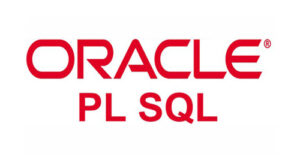REQUEST COMPLIMENTARY SQLS*PLUS LICENCE
Oracle PL/SQL Supporting Functions

Oracle PL/SQL Functions
| Function | Description |
| BFILENAME | The Oracle/PLSQL function returns the BFILENAME locator corresponding to the operating system’s physical filename file name. |
| CARDINALITY | Oracle/PLSQL function CARDINALITY returns the number of elements in the nested table. |
| COALESCE | Oracle/PLSQL function COALESCE returns the first non-zero expression from the list. If all expressions are defined as Null, the COALESCE function will return Null. |
| DECODE | Oracle/PLSQL function DECODE has functionality of IF-THEN-ELSE operator. |
| EMPTY_BLOB | Oracle/PLSQL function EMPTY_BLOB can be used to initialize empty LOB columns in INSERT or UPDATE operators or it can be used to initialize LOB variable. |
| EMPTY_CLOB | Oracle/PLSQL function EMPTY_CLOB can be used to initialize empty LOB columns in INSERT or UPDATE operators or it can be used to initialize LOB variable. |
| GROUP_ID | Oracle/PLSQL function GROUP_ID assigns a number to each group as a result of GROUP BY operator. GROUP_ID function is most often used to identify duplicate groups in query results. |
| LNNVL | Oracle/PLSQL function LNNVL is used in the WHERE SQL query sentence to evaluate the state when one of the operands may contain the value NULL. |
| NANVL | The Oracle/PLSQL function NANVL allows you to replace a value for a floating point number such as BINARY_FLOAT or BINARY_DOUBLE when Nan (Not a number) is encountered. This is most often used to convert the value Nan (Not a number) to NULL or 0. |
| NULLIF | Oracle/PLSQL function NULLIF compares expr1 and expr2. If expr1 and expr2 are equal, the function NULLIF returns NULL. Otherwise, it returns expr1. |
| NVL | Oracle/PLSQL function NVL allows you to replace the value when there is a Null value. |
| NVL2 | Oracle/PLSQL function NVL2 extends the functionality of the NVL function. It replaces the value when a Null value is encountered and also when a non-Null value is encountered. |
| SQLCODE | The SQLCODE function returns the error number associated with an exceptional situation. This function can only be used in the exception handling section of your code. |
| SQLERRM | The SQLERRM function returns an error message related to an exceptional situation. This function can only be used in the exception handling section of your code. |
| SYS_CONTEXT | Oracle/PLSQL function SYS_CONTEXT is used to get information about the state of Oracle environment. |
| UID | Oracle/PLSQL function UID returns an integer number identifying the current database user. |
| USER | Oracle/PLSQL function USER returns user_id from the current Oracle session. |
| USERENV | Oracle/PLSQL function USERENV is used to get information about the current Oracle session. Although this function still exists in Oracle for backward compatibility, it is recommended to use the sys_context function instead. |
MORE NEWS
PreambleNoSql is not a replacement for SQL databases but is a valid alternative for many situations where standard SQL is not the best approach for...
PreambleMongoDB Conditional operators specify a condition to which the value of the document field shall correspond.Comparison Query Operators $eq...
5 Database management trends impacting database administrationIn the realm of database management systems, moreover half (52%) of your competitors feel...
The data type is defined as the type of data that any column or variable can store in MS SQL Server. What is the data type? When you create any table or...
PreambleMS SQL Server is a client-server architecture. MS SQL Server process starts with the client application sending a query.SQL Server accepts,...
First the basics: what is the master/slave?One database server (“master”) responds and can do anything. A lot of other database servers store copies of all...
PreambleAtom Hopper (based on Apache Abdera) for those who may not know is an open-source project sponsored by Rackspace. Today we will figure out how to...
PreambleMongoDB recently introduced its new aggregation structure. This structure provides a simpler solution for calculating aggregated values rather...
FlexibilityOne of the most advertised features of MongoDB is its flexibility. Flexibility, however, is a double-edged sword. More flexibility means more...
PreambleSQLShell is a cross-platform command-line tool for SQL, similar to psql for PostgreSQL or MySQL command-line tool for MySQL.Why use it?If you...
PreambleWriting an application on top of the framework on top of the driver on top of the database is a bit like a game on the phone: you say “insert...
PreambleOracle Coherence is a distributed cache that is functionally comparable with Memcached. In addition to the basic function of the API cache, it...
PreambleIBM pureXML, a proprietary XML database built on a relational mechanism (designed for puns) that offers both relational ( SQL / XML ) and...
What is PostgreSQL array? In PostgreSQL we can define a column as an array of valid data types. The data type can be built-in, custom or enumerated....
PreambleIf you are a Linux sysadmin or developer, there comes a time when you need to manage an Oracle database that can work in your environment.In this...
PreambleStarting with Microsoft SQL Server 2008, by default, the group of local administrators is no longer added to SQL Server administrators during the...















